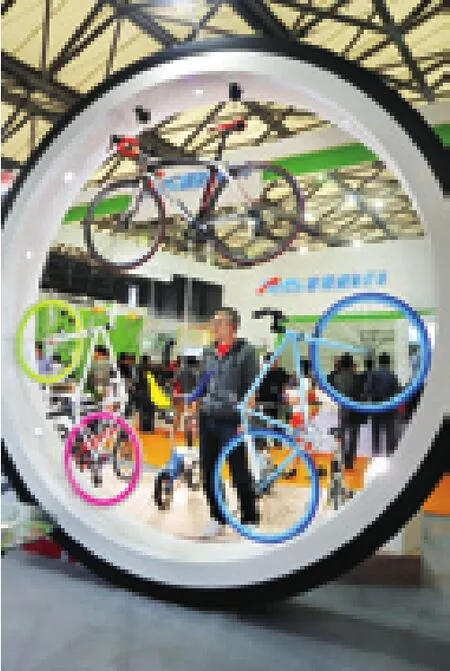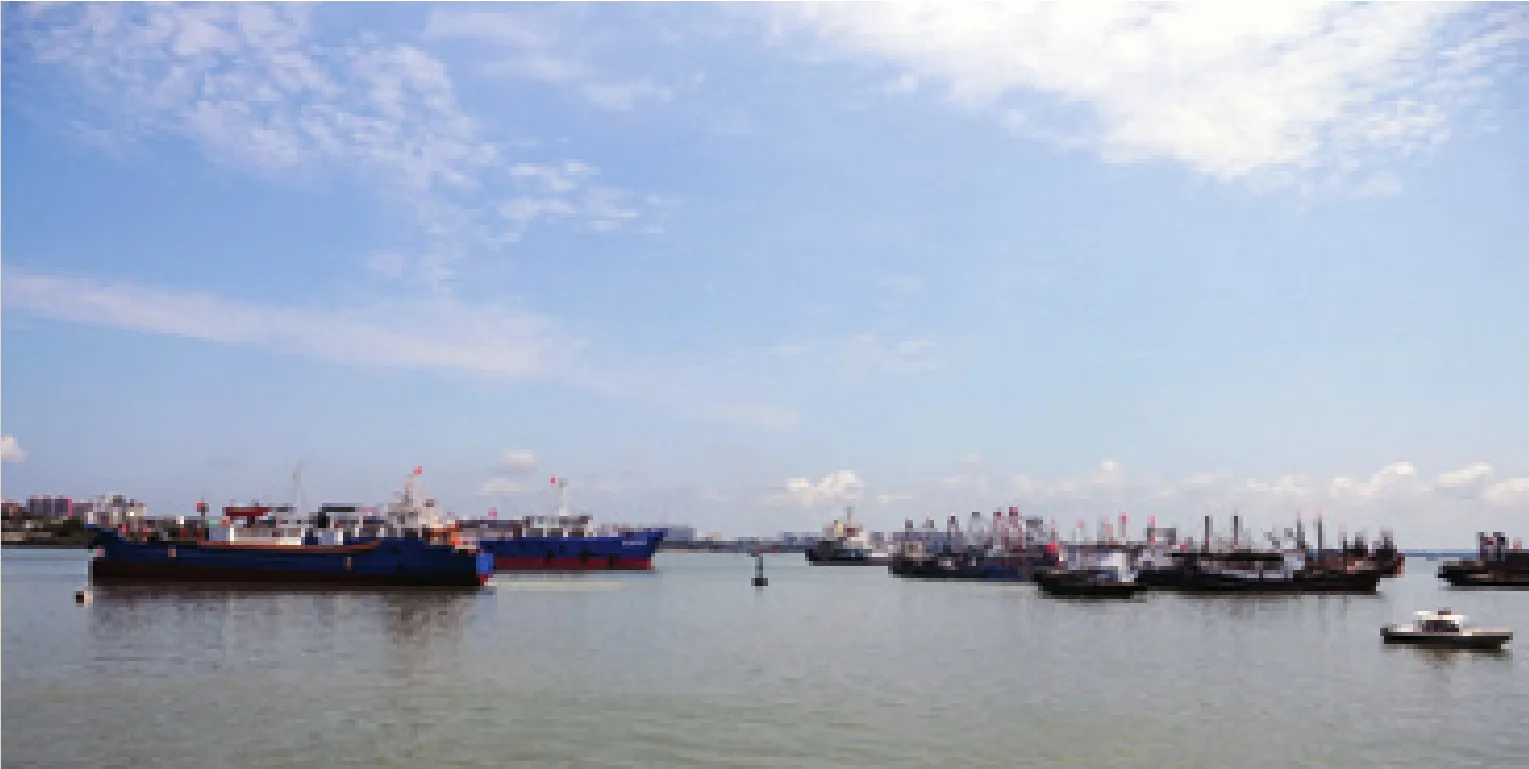SOCIETY
2013-12-06
Back to Normal
Teachers, students and volunteers attend a flag-raising ceremony in Lushan Middle School in Lushan County, Ya’an City in southwest China’s Sichuan Province, on May 6. Classes resumed at 329 schools in the city that day, 16 days after a 7.0-magnitude earthquake jolted the city and surrounding areas.
All 729,341 people who were displaced by the earthquake in Ya’an have been temporarily resettled, local authorities said.
More than 780,000 local residents will be subsidized with 10 yuan ($1.62) and half a kilogram of grain per person per day for six months, according to a government plan.

Food Safety
China will punish the production and sale of unsafe food products more harshly to combat increasingly severe food scandals, judicial authorities said on May 3.
The Supreme People’s Court(SPC) and the Supreme People’s Procuratorate have issued judicial interpretations that specify crimes related to food safety and set standards for the punishment of these crimes, SPC spokesman Sun Jungong told a press conference.
Some 2,088 people were punished between 2010 and 2012 in 1,533 food safety cases. The number of such cases grew exponentially in the three years.
According to the Criminal Law, there are two basic charges of undermining food safety. The first is producing and selling food that fails to meet the safety standards,and the second is producing and selling poisonous and hazardous food. But the charges should meet the important conditions of“enough to cause serious food poisoning and other food-borne diseases.”
Free Lunch
More than 30 million students in rural China are benefiting from a nutritional lunch program launched by the government, according to the Ministry of Education.
At a May 3 video conference,Vice Minister of Education Lu Xin said that the program has covered more than one fourth of rural students in compulsory education in the country.
The program was launched in 2011 to improve nutrition conditions of rural students, each of whom gets a free lunch at school each day.

DUCK AT HARBOR
The world’s largest rubber duck, created by Dutch artist Florentijn Hofman, arrives in Hong Kong on May 2. The 15-meter inflatable rubber sculpture has visited 12 cities in 10 countries since 2007
Polluters Punished
China’s environmental watchdog punished 15 factories, as well as companies in two industrial parks, in the first quarter of the year for violations resulting in water or air pollution.
The factories either had their production suspended, were given a deadline to correct their practices or were ordered to move their projects to other places and compensate those affected, said a release from the Ministry of Environmental Protection on May 8.
The plants were punished for excessive or illegal discharges of exhaust gas and waste water, as well as noise and dust pollution, the statement said.
Antibiotic Overuse
China’s health authorities have demanded further efforts in establishing a long-term mechanism against overuse of antibiotics.
The National Health and Family Planning Commission on May 7 introduced this year’s plan for promoting the reasonable use of antibiotics and containing the rise of bacterial resistance, as part of a national initiative launched in 2011.
Use of antibiotics by patients not in accordance with doctors’ prescriptions is still a phenomenon in China, which not only results in an unnecessary economic burden but also harms people’s health by causing bacterial resistance to antibiotics, the commission said.
CYCLE WORLD
A visitor examines new bicycles at the 23rd China International Bicycle and Motor Fair,which kicked off in Shanghai on May 6

Foreign Entry Rules
The Chinese Government on May 3 released draft regulations relating to foreigners’ entry and residence in China and what is regarded as illegal entry, stay or work in the country.
According to the regulations,foreigners must obtain work permits and residence cert ificates for employment before being employed.Employment beyond the scope or time limit of a student’s work-study program shall be considered illegal.
lt shall also be considered illegal if foreigners remain in the country beyond their visa-free stay period or leave areas they have been allowed to stay in.
Since January 1, travelers from 45 countries have been benefiting from 72-hour visa-free stays in Beijing and Shanghai, a move that is expected to boost consumption. Foreign visitors are not permitted to leave the cities to travel to other Chinese cities during the 72 hours, and have to depart from the two cities.
Foreigners who violate China’s laws and regulations and are deemed “unsuitable” to stay will be given an exit deadline of no more than 30 days, according to the draft.Foreigners who use forged or altered official cert ificates to enter or exit the country will be given a warning and could be fined up to 2,000 yuan($325), the regulations say.
The 61-article draft was released by the Legislative Affairs Office of the State Council, China’s cabinet at www.chinalaw.gov.cn to solicit public opinions until June 3.
Cultural Site Protection
China is making more efforts to preserve its cultural relics, formally prioritizing the protection of more historic sites.
ln early May, the State Administration of Cultural Heritage added 1,943 sites of unmovable cultural relics to the list of key areas that need protection, taking the total number of sites on this list to 4,295.
Reviewed by more than 130 experts, the newly added sites,located in Shanxi, Henan, Hunan,Hebei and Jiangsu provinces,contain 795 pieces of ancient architecture and 516 ancient ruins as well as stone inscriptions and outstanding modern architecture.Many of the new sites also include valuable cultural relics from ethnic minority regions such as north China’s lnner Mongolia Autonomous Region.
According to statistics from the latest national archaeological survey conducted from 2007 to 2011, China has more than 760,000 registered unmovable cultural relics and 2,384 state-owned museums hold 28.6 million collected relics.
The survey also showed that in the past 30 years, more than 40,000 unmovable Chinese relics have vanished, with half of them destroyed by construction work.
Nurse Population
China’s number of certi fied nurses reached 2.49 million at the end of 2012 amid the country’s continuous efforts to build up its nursing population, a senior medical official said on May 8.
That meant an increase of 1.15 million from 2005, according to the National Health and Family Planning Commission.
China aims to bring its nursing population to 2.86 million by 2015,meaning there will be 2.07 nurses for every 1,000 people, according to a blueprint on nursing issued in January 2012.
However, even if that target is met, the ratio of cert ified nurses per 1,000 people in China would still be much lower than the United States and countries in the European Union.
Out to Sea
Thirty Chinese fishing vessels set off for the Nansha lslands in the South China Sea on May 6.
The ships, each with a capacity exceeding 100 tons, will remain around the Nansha lslands for 40 days. A supply ship and a transport vessel will be accompanying the fleet.
The ultimate goal of the operation is to develop a business model that allows fishermen to catch fish around the Nansha lslands on a regular basis, said local fishery authorities.

